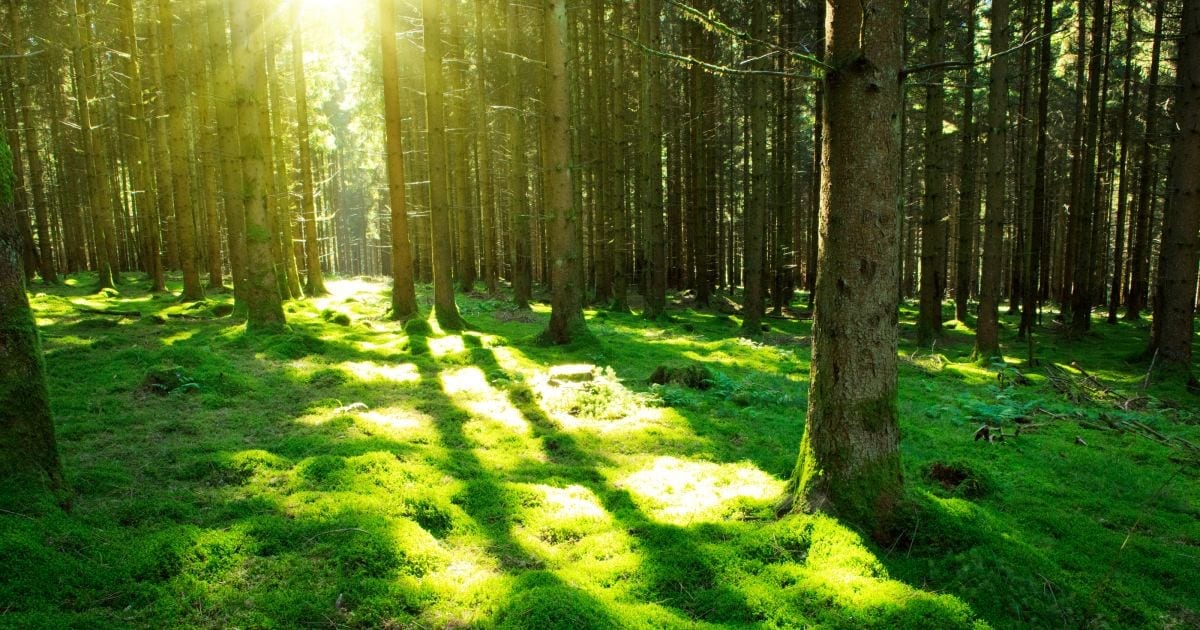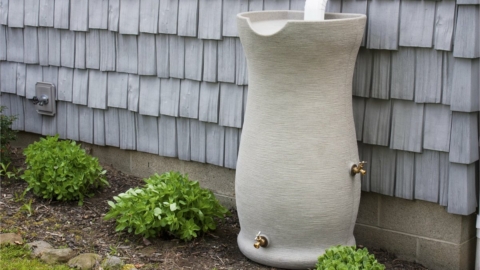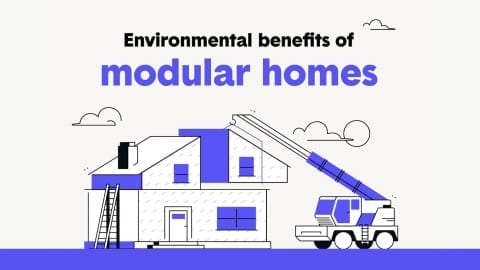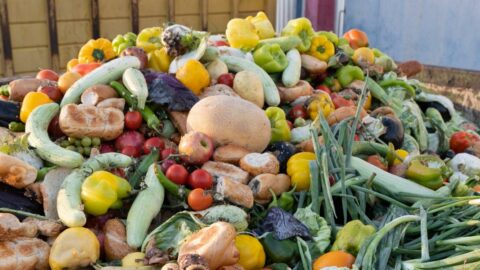Introduction
Cutting back on the amount of water we use is one of the most important aspects of reducing the environmental footprint of our homes. What most people do not understand, however, is that the majority of residential water usage actually occurs outside the home. The water we use for watering our lawn, irrigating our flower and vegetable beds, washing our cars and other types of landscape irrigation is estimated to account for about somewhere between 30 and 60 percent of total annual residential water consumption.
With many states (and especially those in the western part of the country) facing severe water shortages during large parts of the year, finding ways to reduce the water we use around our home is one of the best ways to cut back on the environmental impact and footprint of your home. Below, we outline ten different strategies, solutions, and products that can help you significantly reduce the total amount of water you use in the landscape around your home.
The Environmental Footprint of Residential Water Usage
When you take a walk through the plumbing section of our local home improvement store, you have probably noticed that there are dozens of different faucets, showerheads, high-efficiency toilets, and other devices that all claim to help you drastically cut back on your residential indoor water use. For example, the U.S. Environmental Protection Agency (EPA) estimates that the average family could save 2,700 gallons of water per year by installing WaterSense labeled showerheads throughout their home. WaterSense is a certification program that helps consumers make product choices for devices that reduce the amount of residential water use without sacrificing performance.
Cutting back on the water we use in our bathrooms and kitchens is certainly important. As noted above, however, the vast majority of water that homeowners use occurs outside the home. Most water rationing policies implemented by drought-stricken towns and municipalities, then, focus on eliminating or reducing the amount of water used for outdoor purposes.
According to a recent publication by Harvard University, “by 2071, nearly half of the 204 fresh water basins in the United States may not be able to meet the monthly water demand.” Furthermore, the 2014 Government Accountability Report found that 40 out of 50 state water managers expect water shortages under average conditions in some portion of their states over the next decade.
Given these somber predictions, it can certainly be frustrating to take a drive through a suburban neighborhood on a scorching hot summer day and finding several homes’ lawns being irrigated with sprinkler systems that take up an enormous amount of our water resources. Americans use nearly 9 billion gallons of water each day for outdoor purposes. At the same time, the U.S. Environmental Protection Agency (EPA) estimates that 50 percent of the water we use for outdoor watering purposes goes to waste. During hot summer days, the majority of the water used for irrigating laws and gardens with sprinklers evaporates before ever making its way to the roots of the grass and other plants. In other cases, automated irrigating systems may continue to irrigate the landscapes around our home even when a storm is brewing on the horizon.
Perfectly manicured green lawns are often considered to be synonymous with the typical suburban home. Of course, maintaining this type of landscape generally requires an enormous amount of water usage and can be negatively impacted by the effects of drought. Fortunately, there are several things that homeowners can do to transition to a water-smart landscape around their home. Water-smart landscapes are those that combine native beauty, ecological function, technological innovation, and reduced water usage to increase the overall sustainability of a home. According to the EPA, “Water-smart landscaping produces attractive landscapes because it uses designs and plants that are well suited to local conditions.”
Let´s now turn our attention to the top ten strategies, solutions, and products to help homeowner reduce their exterior water usage.
Top 10 Strategies, Solutions, and Products to Help you Reduce your Exterior Water Use
Ditch the Grass: Xeriscaping your Lawn
For people who live in naturally arid and dry regions, xeriscaping your lawn or creating a xeric garden might be the best way to drastically reduce outdoor water usage. A “xeriscape” is defined by a system of principles to create gardens and landscapes that reduce, or even eliminate, the need for additional irrigation. In arid regions or areas that experience extended seasonal drought, a xeriscaped lawn will integrate drought-tolerant plants and other native plants. In order to make the most of the limited natural rainfall, xeriscaping also relies on contouring the land, capturing and storing rainwater, and other means to essentially eliminate the need for other irrigation. As an added benefits, xeriscaping your lawn with native, drought resistant landscaping can be extremely beautiful and offer a unique aesthetic touch to your home.
Install Rainwater Catchment Systems
If you live in an area that receives constant, steady rainfall throughout the year, then there is most likely no need for additional irrigation. Unfortunately, in most regions across the country, rainfall is sporadic, and droughts tend to occur during the hottest, sunniest parts of the year. Instead of relying on your municipal water supply to irrigate throughout those drought periods, rainwater catchment systems might be an option worth exploring. A rainwater catchment system can help you collect, store, and subsequently use rainwater for irrigating your landscape.
Most rainwater harvesting systems consists of a catchment area (almost always a roof), a transmission/delivery network (think eaves, gutters, down spouts), a storage tank, cistern, or system of rain barrels, and a distribution system to move that water to places that need irrigation. According to one estimate, approximately 550 gallons of rainwater can be collected for every 1000 square feet of collection surface per inch of rain. For most residential yards, even a small amount of rain will yield enough water for sustainable, site-based irrigation.
Swales, Basins, and other Ways to Store Water in your Landscape
Though rainwater catchment systems can help you store the rainwater that would otherwise roll off your roof, there are other “earthworks” and “terra-forming” strategies that can help you store water in the landscape around your home. One of permaculture´s most important principles when it comes to water management is to: “slow it, spread it, and sink it.” Most lawns, unfortunately, are defined by poor, compacted soils. When rains do occur, the vast majority of that water waste rushes off the lawn, and into stormwater drains in the street.
A swale is a shallow ditch dug on contour. By creating several swales throughout your landscape, rainwater will not simply drain away from your home (often causing erosion as well), but rather will spread evenly across the slope and sinks into the soil. Similarly, basins are dug-out depressions where water can naturally accumulate in the soil. Swales, basins, and other similar terra-forming strategies can help you landscape hold water, thus reducing the need for additional irrigation.
Invest in Drip Irrigation Systems for your Vegetable and Flower Gardens
A study by the Massachusetts Institute of Technology (MIT) found that “drip irrigation can reduce a farm’s water consumption by as much as 60 percent and increase crop yield by 90 percent, compared with conventional irrigation systems.” Drip irrigation systems are extremely efficient as they “drip” water onto the soil at very low rates (2-20 liters per hour). The system relies on a system of small diameter plastic pipes fitted with outlets called emitters or drippers. For residential homes, drip irrigation systems are often the most efficient way to reduce water usage, increase your water conservation measures, lower your water bills, while also increasing the yields of flower and vegetable gardens.
Install an IrriGreen Genius™ Sprinkler
Some people might simply not have the time, energy, or resources to engage in major changes to their landscape. If you don’t want to rip out your lawn to plant a cacti landscape or invest in difficult terra-forming strategies, there are water efficient, tech-based solutions that can help you drastically reduce your outdoor water use for irrigating your lawn. The IrriGreen Genius™ Sprinkler is a smart, digital sprinkler system that can help homeowners drastically reduce water usage. With this system, the multi-stream nozzle has a smart, wireless program that can learn to follow the shape of your yard. This means that you won´t be wasting water by irrigating your driveway, the street, or your neighbor´s tree line. Furthermore, the sprinkler system can avoid overlapping irrigation in different parts of your yard.
This unique irrigation system also incorporates a flow meter to automate setup and monitor performance. One independent study done by the Center for Irrigation Technology (CIT) at Fresno State University determined that the IrriGreen Genius Irrigation System with EcoZone™ technology matched the operational sprinkler efficiency and water distribution uniformity of mechanical systems with 40 percent less water.
Greywater Recycling for your Home
Another way to cut back on your outdoor water usage is through the innovative practice of greywater recycling. Greywater recycling refers to the use of wastewater from showers, baths, washing machines, and sinks, to be re-used and fed back into your surrounding landscape for irrigation purposes. For households that use bio-degradable and nature-friendly soaps and other cleaning products, the leftover phosphates from those residues can actually act as a fertilizer for the plants around your home. Greywater recycling systems, then, can reduce your need for additional irrigation by recycling water into the landscape instead of simply sending it down the drain. Properly installed systems can help save around 70 liters of potable water per person per day in domestic households while also helping to retain soil moisture throughout the year.
Install a “Clover Lawn”
If you enjoy the look of a bright green lawn, but want to reduce the amount of water to keep your landscape green throughout the dry and hot summer, a clover lawn might be a solution worth exploring. During the establishment phase, you will need water your clover lawn daily. However, one the clover takes root, it needs surprisingly little water to stay green throughout the year. Clover roots go deep into the soil to search for the moisture it needs. They also fertilize your lawn by capturing nitrogen from the air. Clover species are widely known to be one of the best drought-resistant plants for lawns.
Clover lawns, then, not only reduce the amount of water you use for irrigating, but can also reduce the amount of fertilizer and other dangerous lawn chemicals that are associated with turf lawns.
Install Orbit Irrigation Systems
Another tech solution for reducing irrigating needs is offered by Orbit Irrigation Systems. Their B-hyve Hose Faucet Timer gives homeowners complete control over hose faucet watering from your Wi-Fi or Bluetooth smart home device hub. This means that if you are stuck at work for the evening and want to turn off your automatic irrigation schedule because a storm is coming, you can control your irrigation system remotely from your phone. This smart watering system can also receive instant weather updates for your region. Essentially, this smart irrigation system is able to adjust the watering schedule to deliver just the right amount of water to your plants based on expected rainfall (through its rain sensors) and how much water is currently in the soil. A side benefit of this is that it helps you to save on your energy bills as well.
Plant Perennials
When designing your landscape, focusing on perennial plants is generally a good strategy for reducing overall irrigation needs. Whereas most annual plants and flowers have lower water requirements and need to be watered daily, established perennial plants generally only need to be watered once or twice per week. Perennials have deeper root systems which allow them to withstand drought. Furthermore, there are hundreds of different perennial, flowering plants that can add beauty to any yard. Black-eyed Susans, Amsonia, Baptisia, Foxglove, Astrantia, and Salvia are just a few of the beautiful perennial flowers that can keep your landscape beautiful with little to no extra irrigation needs.
Improve your Soil Quality
Lastly, improving the soil quality around your home is another way to cut back on your irrigation needs. Healthy, fertile topsoil will always need less watering than compacted soils with high clay content. One study determined that for every 1 percent increase in soil organic matter, your soil can hold and additional 20,000 gallons more water per acre. Applying organic mulches, compost, and other organic material can help reduce water evaporation. Furthermore, as this organic material breaks down, it will decompose into healthy topsoil over time.
Conclusion: Healthier Landscapes around our Homes Use Less Water
As we have seen, there are several technologies, techniques, and strategies that can be used to quickly reduce the amount of water we rely on to irrigate the landscapes around our homes and thus see major water savings in our home. These solutions begin, however, by re-thinking and re-imagining what our lawns should look like. Many experts refer to the standard residential lawn as a “green desert.” Millions of pounds of herbicide, fertilizer, and other strong lawn chemicals essentially destroy the soil ecosystem and require an enormous amount of water for irrigation purposes.
The ten solutions outlined above can help us move beyond the chemical-soaked “green desert” paradigm that has come to dominate our urban and suburban landscapes. The result is not only less outdoor water usage and a lower water footprint, but a more beautiful and healthier landscape to enjoy.
- Top 10 Ways to Save Water Used for Landscaping - January 1, 2023
- Accessory Dwelling Units (ADUs) Help Ease Housing Cost in California - May 8, 2022
- Living Smaller: Tiny Homes in the Bay Area - May 6, 2022










